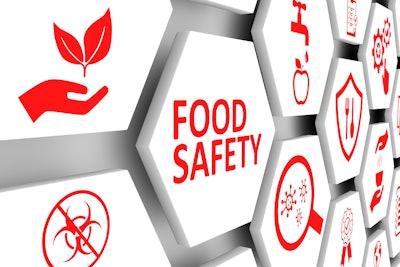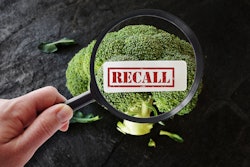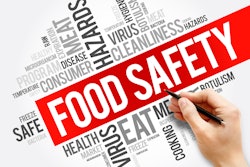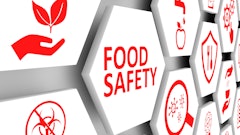
As the world's food systems become increasingly interconnected, the need for supply chain transparency has never been more pressing. With food traveling farther and faster than ever before, understanding its origin, movement and transformation is vital for consumer trust, safety and sustainability.
For businesses in the food industry, transparency also ensures price stability and drives long-term market success. The cost of goods is heavily influenced by volatile food commodities, and businesses must be aware of the commodities involved in their production, processing or distribution to create stability through unstable times. With a firm understanding of these elements, companies can mitigate the impact of commodity price increases, which can erode profit margins and hinder competitiveness. As a result, meeting the growing demand for transparency and accountability has become a critical business imperative.
Consumers expect brands to have complete visibility into their supply chains. However, supply chain complexity often prevents businesses from getting the full story behind a product, leading to threats that range from food safety risks to negative economic implications. These gaps can erode consumer trust and loyalty and take a toll on cost consistency.
Complexity poses barriers to a transparent food supply chain
The food supply chain’s intricate structure comprises numerous stages, interest groups, and processes. From harvesting crops to putting a product on the shelf, a lot of time and effort goes into each phase. The complexities that hinder full transparency include the involvement of numerous stakeholders, globalization, lack of standardization, proprietary information that can’t be shared easily, rapid scaling, regulatory fragmentation, data-management challenges, investment costs and resource allocation.
Tracking and sharing information between multiple stakeholders can be challenging, especially if international trade and sourcing make it difficult to monitor and disclose information about products' origins, movements and transformations. Varying standards, formats and protocols across nations and industries complicate data collection and sharing. On top of that, some companies consider their supply chain data proprietary, making it difficult for others to share or access.
Maintaining transparency becomes harder as supply chains grow, particularly for small and medium-sized enterprises. Navigating diverse regulations in unfamiliar countries can create confusion and hamper visibility. Managing and analyzing large amounts of data from various sources can be overwhelming, but implementing robust data governance requires a considerable investment in technology, training and personnel.
Price visibility minimizes threats, maximizes growth opportunity
Without clear visibility, supply chain companies are vulnerable to obstacles that can compromise their resilience and long-term viability. These threats include reduced profit margins due to inaccurate pricing, overstocking or understocking that leads to waste or stockouts, and failed investments in unsustainable or unprofitable products. Issues of this nature can reduce competitiveness, potentially leading to market share loss.
Having price transparency for all food-related commodities, reliable advanced price forecasting and accurate cost modeling can lower price risk management and help manage the costs of stock-keeping units. It’s impossible to overemphasize the importance of supporting buyers and sellers of commodities with insights, news and analysis on their markets – including weather reports and detailed understanding of crop supplies.
Grocery retailers learned these lessons during the COVID-19 pandemic. Supply chain disruptions, skyrocketing prices and product shortages caused serious upheaval. This highlighted the importance of having a transparent and responsive supply chain to maintain continuity. Many companies at risk of losing their competitive edge invested in price transparency and forecasting technology. For instance, some retailers leveraged their scale and data analytics to optimize pricing strategies and gain market share. Other grocers have taken similar actions to manage inventory and fulfillment processes while minimizing waste, which has made a difference. Operating profits for grocery retail stores increased from $14 billion in 2019 to $25 billion in 2023, a 79% spike.
Food manufacturers are continuously refining forecasting tactics to maintain profitability. Consider the case of chocolate, whose production costs have surged due to unprecedented cocoa price hikes. Consequently, consumers have become increasingly price sensitive. Despite steady growth in overall chocolate spending over the past two years, buyers have reduced their purchase quantities, indicating a shift in consumption patterns. By staying on top of this information, companies can adjust their pricing and quantity strategies to meet consumer demand and avoid negative impacts to their sales volume.
Supply chain opacity poses far-reaching risks beyond financial losses and consumer preferences. It also may enable counterfeiters to introduce fake or compromised products and can lead to environmental degradation, labor exploitation and animal welfare issues. The resulting brand reputation damage can cut deeper than surface-level harm, exposing companies to legal repercussions, fines and penalties for regulatory non-compliance. Disruptions stemming from inefficient forecasting practices and supply chain management can weaken consumer confidence and loyalty and could even leave communities without critical food supplies.
Close supply chain gaps to reduce risk
In addition to unsettling risks, uncertainty can arise from the disconnect between product lifecycle phases. Consumers now demand and reward end-to-end visibility. Complete supply chain transparency earns loyalty from 94% of buyers, who say they're likely to stand by a transparent brand, and 39% are willing to switch to one that offers more transparency.
Businesses must provide product clarity and address concerns such as the authenticity of suppliers' certification claims, adherence to standards like organic or fair trade, potential unethical practices and environmental impacts, including carbon footprint. Falling short on supply chain accountability will impact a company’s performance, jeopardizing customer satisfaction and profitability.
To eradicate these risks and demonstrate that sustainable and ethical practices are essential for long-term success, businesses must take proactive steps.
Implementing digital technologies. Blockchain offers secure, decentralized data management that provides an unalterable, transparent ledger of the supply chain. IoT sensors enable real-time monitoring and tracking, enhancing pipeline visibility and control.
Enhancing collaboration and communication. Establishing industry-wide standards for data sharing streamlines communication and transparency. Routine audits maintain high standards and ensure consistent compliance. Training and education can foster an open culture among suppliers and stakeholders.
Increasing visibility and transparency. End-to-end mapping of the logistics journey identifies gaps and areas for improvement. Regular reporting keeps stakeholders informed about supply chain activities, and public disclosure of supply chain information can build consumer trust.
Strengthening supplier management. Rigorous selection and careful vetting of suppliers ensure alignment with transparency goals, which is particularly important as supplier issues are a leading cause of recalls. Over 60% of respondents in a recent Pulse of Quality in Manufacturing survey claimed that up to half of product recalls can be attributed to supplier issues. Regular performance evaluations can maintain high standards among suppliers, and building strong relationships with them can foster a culture of open communication and cooperation.
With transparency and sustainability dominating consumer concerns, gaining insight into the origins of agrifood and non-agricultural food commodities is a crucial first step in forging a robust and resilient food supply chain. By facilitating collaboration and harnessing digital technologies to create visibility into the entire lifecycle — from harvest to shelf — companies can make informed predictions, mitigate disruptions, and ensure the integrity of their products. These responsible practices will safeguard their reputations and bottom lines while supporting a more ethical and conscientious global food system.

















